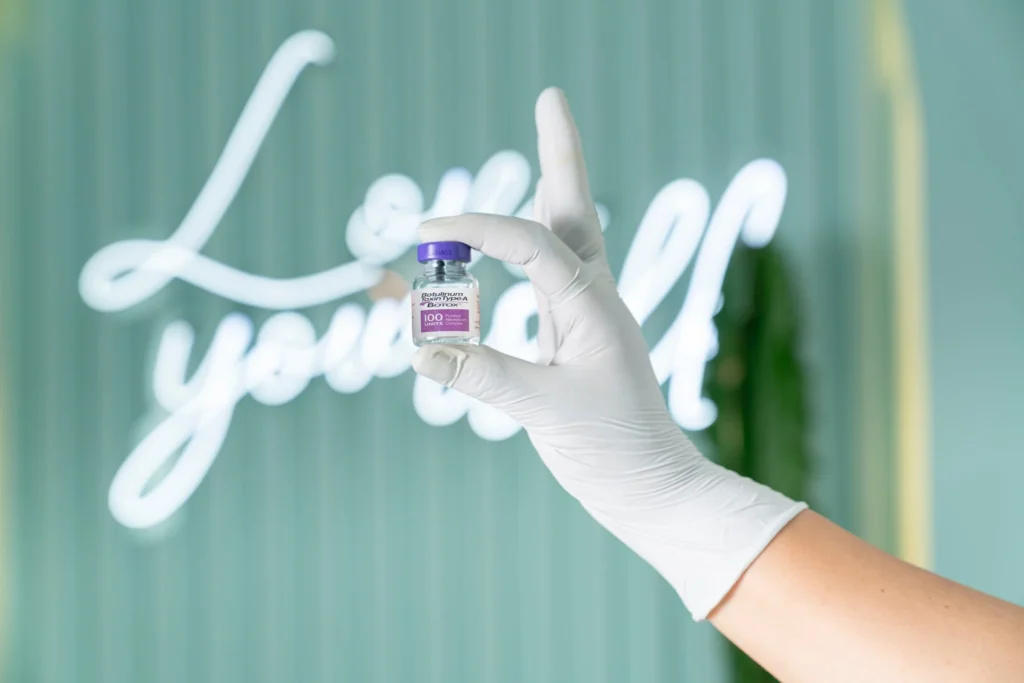In the realm of cosmetic treatments, two popular names often surface: Dysport and Botox. Both products have a track record of smoothing wrinkles and fine lines, yet many are curious about how their side effects may differ. As derivatives of botulinum toxin A, they work by temporarily paralyzing muscles, but it’s the nuances in their formulation, duration, and side effects that can influence a patient’s choice.
Understanding the differences between dysport vs botox is crucial for making an informed decision. While both treatments have similar applications in terms of cosmetic enhancements and some medical conditions, individual responses to these treatments can vary. This highlights the need for a tailored approach under the guidance of a qualified provider, as well as an understanding of what one might expect following the procedure.
Key Takeaways
- Dysport and Botox are distinct products with specific, clinically approved uses.
- Both treatments have a profile of side effects that may vary based on individual factors.
- Professional consultation is essential to navigate the differences and decide on the appropriate treatment.
Understanding Dysport and Botox
Dysport and Botox are both FDA-approved treatments derived from botulinum toxin A, designed to reduce the appearance of wrinkles and treat certain muscle-related conditions. They work by temporarily paralyzing muscles, leading to a smoother facial appearance.
Mechanism of Action
Dysport and Botox are neuromodulators, substances that alter nerve impulses, specifically blocking the signals that cause muscle contractions. By doing so, they prevent the formation of muscle spasms and fine lines on the face, such as crow’s feet, forehead lines, and glabellar lines. Their use extends beyond cosmetic applications; for instance, Botox is also used to treat chronic migraine, cervical dystonia, and spasticity among other medical conditions.
Treatment Process and Provider Qualifications
Your provider’s qualifications are crucial for the successful administration of Dysport or Botox. Only a board-certified dermatologist, plastic surgeon, or a nurse under supervision should carry out the procedure due to the intricate knowledge of facial anatomy required. Before Dysport or Botox injections, you should have a thorough consultation to discuss the dosage, injection site, and your desired outcomes. The actual treatment is quick, often completed within 10 to 20 minutes, and does not typically involve any anesthesia.
Safety and Side Effect Profiles
Both Dysport and Botox have a track record of safety when administered by a qualified healthcare provider. However, side effects can occur and differ subtly between the two. You may experience pain, swelling, redness, or bruising at the injection sites. Dysport may have a higher tendency to spread or diffuse, potentially leading to muscle weakness or eyelid swelling in adjacent areas. To minimize the risk of adverse effects, it is crucial to follow your provider’s pre- and post-treatment instructions carefully.
Comparing Dysport and Botox Side Effects
When considering treatments to reduce wrinkles and fine lines, it’s crucial to understand that both Dysport and Botox have their own set of side effects. The side effects vary from common issues like swelling and redness to more unique concerns such as muscle weakness. Being aware of these can help you have an informed discussion with your healthcare provider.
Unique Side Effects of Dysport
Dysport may cause muscle weakness further from the injection site due to its propensity to spread or diffuse slightly more than Botox. This is an important consideration, especially when treating areas close to sensitive muscles responsible for important functions. In some cases, after receiving Dysport injections, individuals have reported muscle spasms in areas adjacent to the treatment area.
Unique Side Effects of Botox
Conversely, Botox is renowned for its precise unit-by-unit treatment, which can limit the muscle weakness to the targeted area. However, unique side effects of Botox can include bruising at the injection site, especially if the provider does not apply an anesthetic or if the individual has a sensitivity to needles or a predisposition to bruising.
Factors Influencing Side Effects
Several factors can influence side effects, including the dose, individual muscle characteristics, and the provider’s technique. A board-certified provider with extensive experience in administering these treatments is likely to minimize side effects through proper dosage and precise application. Additionally, side effects may be more pronounced in certain treatment areas; therefore, a thorough consultation with your healthcare provider can help to tailor a safe and effective treatment plan for your needs. It’s also advisable to follow up with your provider post-treatment to manage any unexpected side effects such as excessive swelling or pain.
Conclusion
When deciding between Dysport and Botox, it’s essential to consider their similarities and differences, particularly concerning side effects. Both treatments may result in pain, swelling, redness, and bruising at the injection site. Dysport tends to spread more, offering a broader effect, which can be an advantage or a drawback, depending on the area treated. Your practitioner’s expertise will play a critical role in ensuring a successful outcome with minimal adverse effects.
